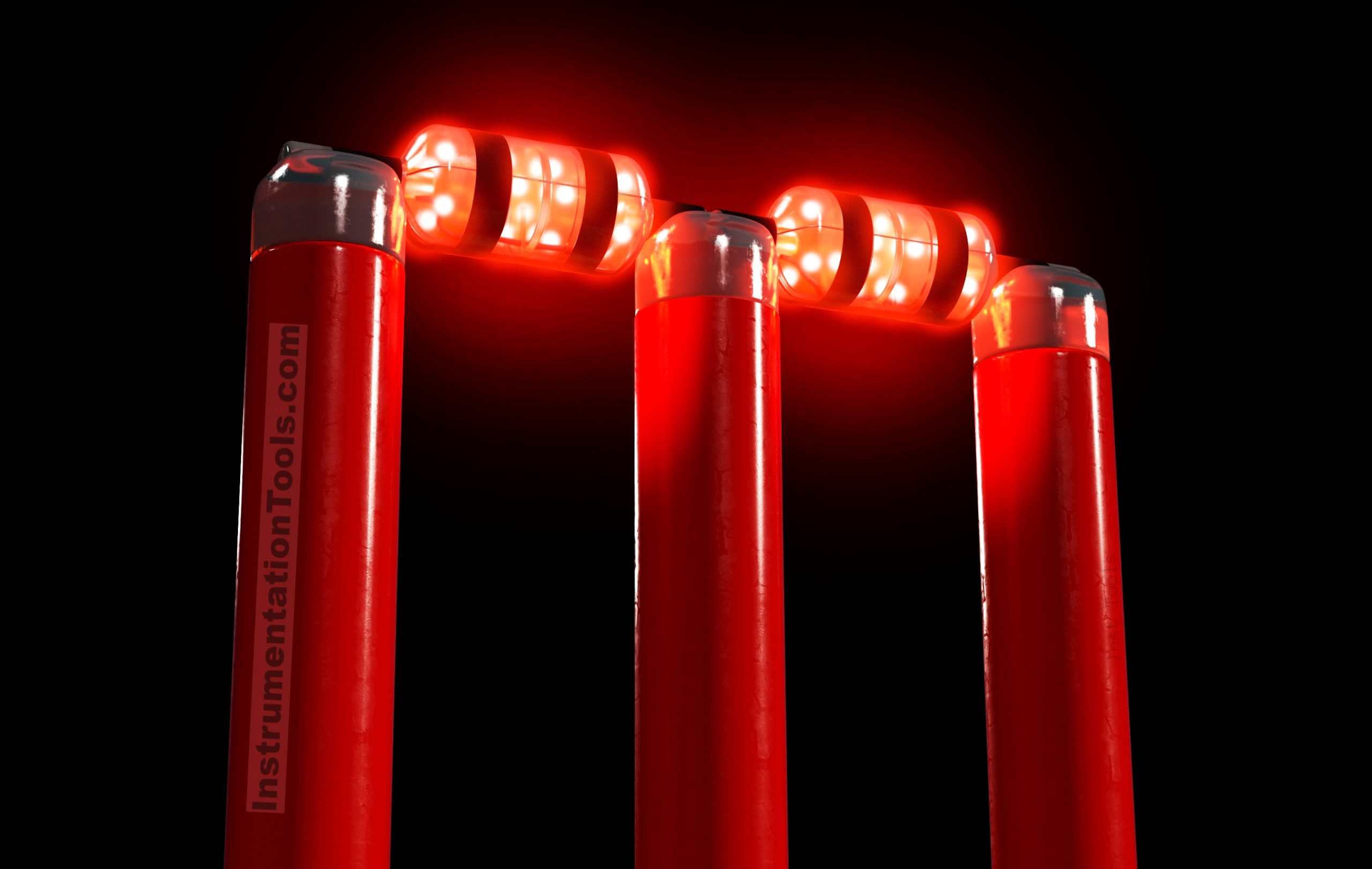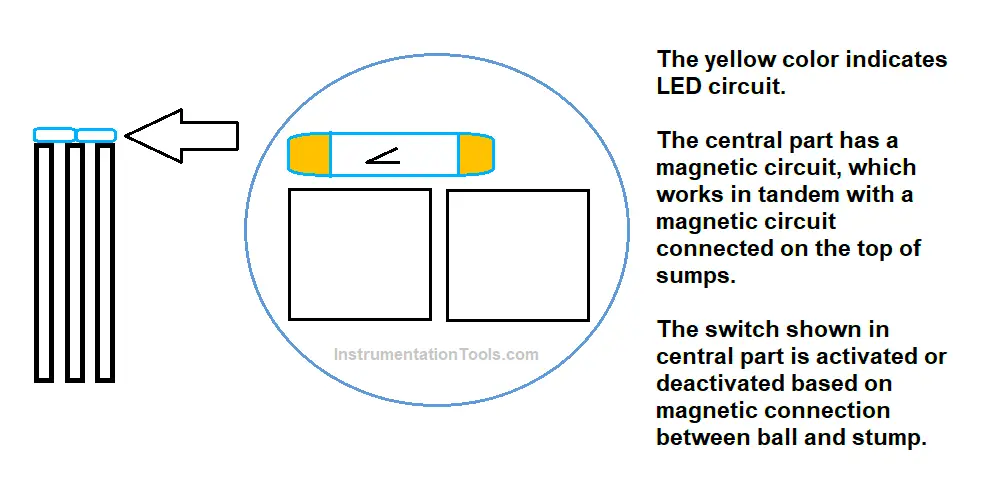Electronic technology is evolving day by day and we are getting to see many new technologies in it. As electronics is widely used in many areas of applications, every application is finding some new methods to make it innovative.
Let us take sports application. Recently, you must have seen cricket and in that, how LED light comes from bails that are mounted on stumps. When the bails are dislodged from the stumps on a wicket, LED light comes from it.
LED stumps help to easily recognize whether a wicket has fallen or not. But have you ever wondered how this light occurs? In this post, we will see how an LED wicket in a cricket stump works.
Why LED Wicket System is used?

As discussed earlier, an umpire gets to easily identify whether a wicket has fallen or not. Three types of wickets relate to a stump – clean bowled, run-out, or stumping. It happens many times that the ball hits the stump, but the bail does not fall.
And unless the bail has not dislodged from the stump, it is not declared out. This case is more difficult in run-out or stumping because the umpire has to decide whether the bat has reached the crease or not before the bail has dislodged.
In this case, a system was recently introduced where the bail will emit light as soon as it has dislodged from the stumps. This visual recognition helps the umpire to declare a wicket easily.
Also, as this method is precise, there are rare chances of a mistaken review given by the umpire.
LED Stumps in Cricket
Now, let us see how this system works. Refer to the below image. As you can see, two bails are mounted on stumps. Each bail has a low-voltage battery inside it.

Apart from it, it also consists of a magnetic circuit and an LED circuit. The battery will power the bail. It is to be noted that the stump too has a magnetic circuit and battery. The only difference being extra is that the bail has an LED circuit.
The magnets decide whether the bail is dislodged or not. When the bail is properly mounted, the magnets will attract each other and the switch inside will remain open. This will not trigger the LED. But, when the bail gets dislodged, the magnets will repel each other. Due to this, the switch inside will get closed on detecting it.
As soon as the switch closes, the LED trigger circuit gets charged for powering up. This will lighten up the LED. The triggering speed is so fast that it works at a time of 1/1000th second. This is lighting fast and quickly helps the umpire to detect a wicket.
The trigger circuit used for powering on or off an LED is usually a Schmitt trigger circuit. It continuously monitors the magnetic field and any change in electromagnetic field will ask the trigger circuit to close the switch and power on the LED. This change is so accurate that it can detect even the slightest movement of the bail from stumps.
The material used for bails and stumps outside is a plastic composite one. This can tolerate fast bowling up to 160 km/hr. Due to this, the bail or stump will not break; otherwise, the electronic circuit inside will break too. So, the material used is of utmost importance.